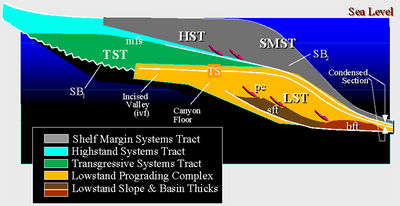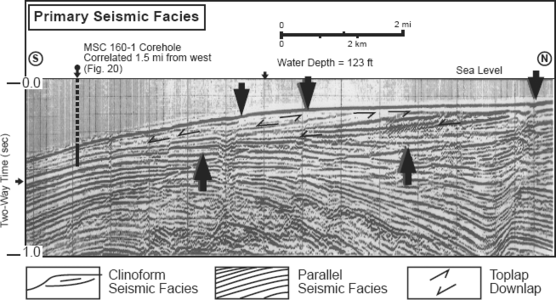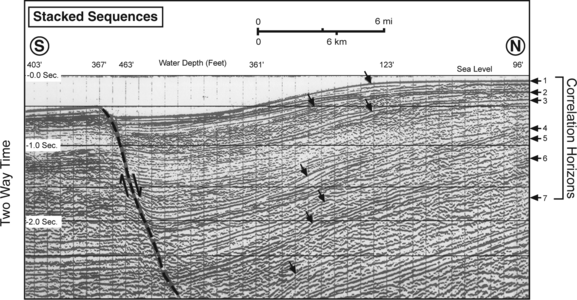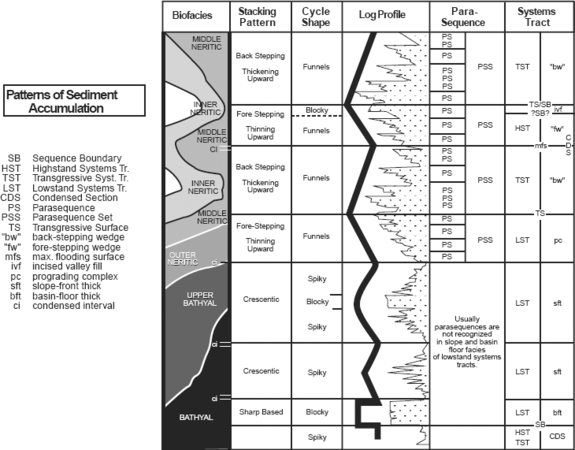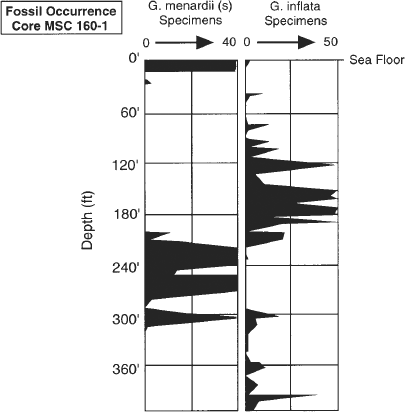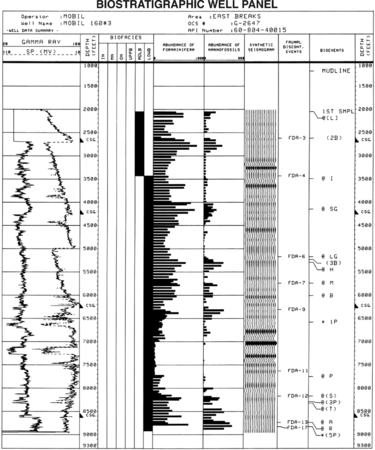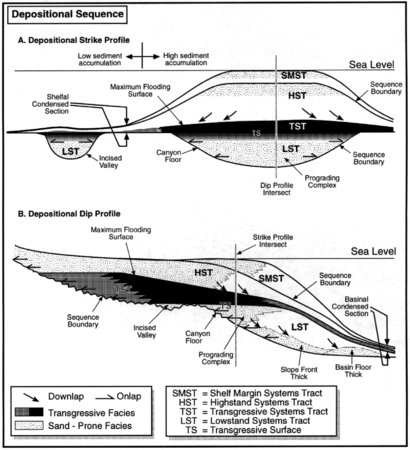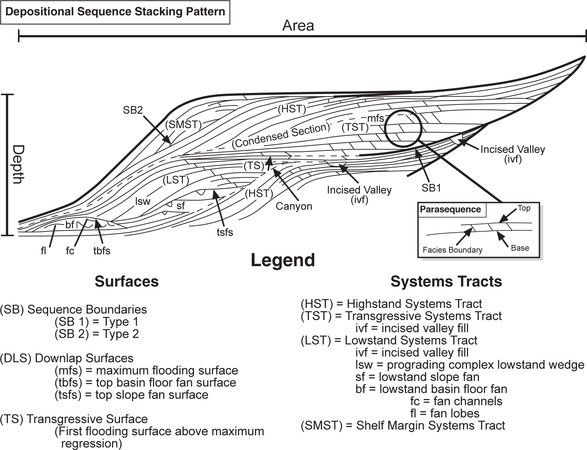Difference between revisions of "Systems tracts identification"
Cwhitehurst (talk | contribs) |
Cwhitehurst (talk | contribs) m (added Category:Treatise Handbook 3 using HotCat) |
||
| (32 intermediate revisions by 2 users not shown) | |||
| Line 6: | Line 6: | ||
| part = Critical elements of the petroleum system | | part = Critical elements of the petroleum system | ||
| chapter = Sedimentary basin analysis | | chapter = Sedimentary basin analysis | ||
| − | | frompg = 4- | + | | frompg = 4-50 |
| − | | topg = 4- | + | | topg = 4-52 |
| author = John M. Armentrout | | author = John M. Armentrout | ||
| link = http://archives.datapages.com/data/specpubs/beaumont/ch04/ch04.htm | | link = http://archives.datapages.com/data/specpubs/beaumont/ch04/ch04.htm | ||
| Line 14: | Line 14: | ||
| isbn = 0-89181-602-X | | isbn = 0-89181-602-X | ||
}} | }} | ||
| − | Certain types of hydrocarbon | + | Certain types of hydrocarbon [[trap]]s are more commonly associated with a particular [[Depositional systems tracts|depositional systems tract]]. Identifying the [[Sea_level_cycle_phase_and_systems_tracts#Highstand_systems_tracts|highstand]], [[Sea_level_cycle_phase_and_systems_tracts#Lowstand_systems_tracts|lowstand]], or [[Sea_level_cycle_phase_and_systems_tracts#Transgressive_systems_tracts|transgressive]] systems tract and the specific depositional environments within each lets us predict possible [[reservoir]], [[seal]], and [[Calculating charge volume|charge system]] for each potential trap. |
| − | [[file:Systems_Tracts.jpg|thumb|400px | + | [[file:Systems_Tracts.jpg|thumb|400px|Systems tracts: Highstand, transgressive, and lowstand. Modified from Vail.<ref name=ch04r99></ref> From Snedden and Sarg.<ref name=Sneddedandsarg_2008>Snedden, John W., and J. F. (Rick) Sarg, Seismic Stratigraphy-A Primer on Methodology, Search and Discovey Article #40270 (2008).</ref>]] |
| − | |||
==Methods== | ==Methods== | ||
<gallery mode=packed heights=200px widths=200px> | <gallery mode=packed heights=200px widths=200px> | ||
file:sedimentary-basin-analysis_fig4-19.png|{{figure number|1}}Seismic reflection profile rom the East Breaks field area, illustrating both clinoform and parallel reflection patterns in late Pleistocene sediments immediately below the sea floor (between two sets of bold arrows). Three listric growth faults (down arrows) cut through the clinoforms. Modified from Armentrout;<ref name=ch04r8 /> courtesy Gulf Coast SEPM. | file:sedimentary-basin-analysis_fig4-19.png|{{figure number|1}}Seismic reflection profile rom the East Breaks field area, illustrating both clinoform and parallel reflection patterns in late Pleistocene sediments immediately below the sea floor (between two sets of bold arrows). Three listric growth faults (down arrows) cut through the clinoforms. Modified from Armentrout;<ref name=ch04r8 /> courtesy Gulf Coast SEPM. | ||
| − | file:sedimentary-basin-analysis_fig4-21.png|{{figure number|2}}Seismic reflection profile from the High Island South Addition area, GOM basin, 20 mi east of the East Breaks shelf-margin delta. From Armentrout<ref name=ch04r8 />, 1996 | + | file:sedimentary-basin-analysis_fig4-21.png|{{figure number|2}}Seismic reflection profile from the High Island South Addition area, GOM basin, 20 mi east of the East Breaks shelf-margin delta. From Armentrout;<ref name=ch04r8 /><ref name=Armentrout1996>Armentrout, J. M., 1996, High-resolution sequence biostratigraphy: examples from the Gulf of Mexico Plio–Pleistocene, in J. Howell and J. Aiken, eds., High Resolution Sequence Stratigraphy: Innovations and Applications: The Geological Society of London Special Publication 104, p. 65–86.</ref> courtesy Gulf Coast SEPM and Geological Society of London. |
</gallery> | </gallery> | ||
<gallery mode=packed heights=300px widths=300px> | <gallery mode=packed heights=300px widths=300px> | ||
file:sedimentary-basin-analysis_fig4-22.png|{{figure number|3}}Interpretation template for log motif analysis. From Armentrout et al.;<ref name=ch04r8 /> courtesy The Geological Society of London. | file:sedimentary-basin-analysis_fig4-22.png|{{figure number|3}}Interpretation template for log motif analysis. From Armentrout et al.;<ref name=ch04r8 /> courtesy The Geological Society of London. | ||
| − | file:sedimentary-basin-analysis_fig4-20.png|{{figure number|4}}Contrast of the abundance of sinistral (s) ''Globorotalia menardii (G. menardii)'' and ''Globorotalia inflata (G. inflate)'' in each sample. From Armentrout<ref name=ch04r8 /> | + | file:sedimentary-basin-analysis_fig4-20.png|{{figure number|4}}Contrast of the abundance of sinistral (s) ''Globorotalia menardii (G. menardii)'' and ''Globorotalia inflata (G. inflate)'' in each sample. From Armentrout;<ref name=ch04r8 /><ref name=Armentrout1996 /> courtesy Gulf Coast SEPM and Geological Society of London. |
| − | file:sedimentary-basin-analysis_fig4-23.png|{{figure number|5}}Histogram. From Armentrout | + | file:sedimentary-basin-analysis_fig4-23.png|{{figure number|5}}Histogram. From Armentrout;<ref name=ch04r7 /><ref name=Armentrout1996 /> courtesy Springer-Verlag, Geological Society of London. |
</gallery> | </gallery> | ||
| − | Identifying a depositional systems tract can be achieved by analyzing seismic geometries ([[:file:sedimentary-basin-analysis_fig4-19.png|Figures 1]] and [[:file:sedimentary-basin-analysis_fig4-21.png|2]]), wireline | + | Identifying a depositional systems tract can be achieved by analyzing [[Reflection configuration patterns|seismic geometries]] ([[:file:sedimentary-basin-analysis_fig4-19.png|Figures 1]] and [[:file:sedimentary-basin-analysis_fig4-21.png|2]]), [[Basic open hole tools|wireline log]] motifs ([[:file:sedimentary-basin-analysis_fig4-22.png|Figure 3]]), and [[Biostratigraphy in sequence stratigraphy|biostratigraphic data]] ([[:file:sedimentary-basin-analysis_fig4-20.png|Figures 4]] and [[:file:sedimentary-basin-analysis_fig4-23.png|5]]). Carefully integrating multiple data sets increases the probability of a correct interpretation.<ref name=ch04r7>Armentrout, J. M., 1991, Paleontological constraints on depositional [[modeling]]: examples of integration of biostratigraphy and seismic stratigraphy, Pliocene–Pleistocene, Gulf of Mexico, ''in'' Weimer, P., Link, M. H., eds., Seismic Facies and Sedimentary Processes of Submarine Fans and Turbidite Systems: New York, Springer-Verlag, p. 137–170.</ref><ref name=ch04r15>Armentrout, J. M., Malacek, S. J., Mathur, V. R., Neuder, G. L., Ragan, G. M., 1996, Intraslope basin reservoirs deposited by gravity-driven processes: south Ship Shoal and Ewing Banks areas, offshore Louisiana, in Pacht, J. A., Sheriff, R. E., Perkins, B. F., eds., Stratigraphic Analysis: Utilizing Advanced Geophysical, Wireline, and Borehole Technology for Petroleum Exploration and Production: Proceedings, Gulf Coast Section SEPM 17th Annual Research conference, p. 7–18.</ref><ref name=ch04r8>Armentrout, J. M., 1993, Relative seal-level variations and fault-salt response: offshore Texas examples: Proceedings, Gulf Coast Section SEPM 14th Annual Research Conference, p. 1–7.</ref><ref name=ch04r101>Vail, P. R., Wornardt, W. W., 1990, Well log seismic stratigraphy: a new tool for exploration in the '90s: Proceedings, Gulf Coast Section SEPM 11th Annual Research conference, p. 379–388.</ref> |
==Stratal pattern simulation== | ==Stratal pattern simulation== | ||
| + | <gallery mode=packed heights=300px widths=300px> | ||
| + | sedimentary-basin-analysis_fig4-18.png|{{figure number|6}}Computer-simulated stacking pattern of stratal units within an [[unconformity]]-bound depositional sequence. After Vail.<ref name=ch04r99>Vail, P. R., 1987, [http://archives.datapages.com/data/specpubs/oversiz2/data/a188/a188/0001/0000/0001.htm Seismic stratigraphy interpretation procedure], ''in'' Bally, A. W., ed., Atlas of Seismic Stratigraphy: [http://store.aapg.org/detail.aspx?id=478 AAPG Studies in Geology No. 27], p. 1–10.</ref> and Loutit et al.<ref name=ch04r59>Loutit, T. S., Hardenbol, J., Vail, P. R., Baum, G. R., 1988, Condensed sections: the key to age determination and correlation of continental margin sequences: SEPM Special Publication 42, p. 183–213.</ref> | ||
| + | sedimentary-basin-analysis_fig4-26.png|{{figure number|7}}Computer-simulated stacking pattern of stratal units within an unconformity-bound depositional sequence. Modified from Haq et al.;<ref name=Haq1988>Haq, B., J. Hardenbol, and P. R. Vail, 1988, Mesozoic and Cenozoic chronostratigraphy and cycles of sea-level change: SEPM Special Publication 42, p. 71–108.</ref> courtesy SEPM. | ||
| + | </gallery> | ||
| − | + | [[:file:sedimentary-basin-analysis_fig4-18.png|Figure 6]] shows the computer-simulated stacking pattern of stratal units within an [[unconformity]]-bound depositional sequence. [For computer modeling, see Jervey.<ref name=ch04r49>Jervey, M. T., 1988, Quantitative geologic modeling of siliciclastic rock sequences and their seismic expression: SEPM Special Publication 42, p. 47–69.</ref>] The simulation forces all sediment to be deposited within the 2-D plane of the diagram. In the natural world, the depositional thicks associated with each systems tract are likely to occur laterally to each other, and their recognition requires a 3-D data set. Additionally, postdepositional [[deformation]] and [[erosion]] significantly modify the idealized geometry shown in [[:file:sedimentary-basin-analysis_fig4-18.png|Figures 6]] and [[:file:sedimentary-basin-analysis_fig4-26.png|7]]. | |
| − | |||
| − | |||
| − | |||
| − | [[:file:sedimentary-basin-analysis_fig4-18.png|Figure 6]] shows the computer-simulated stacking pattern of stratal units within an unconformity-bound depositional sequence. [For computer modeling, see Jervey.<ref name=ch04r49>Jervey, M. T., 1988, Quantitative geologic modeling of siliciclastic rock sequences and their seismic expression: SEPM Special Publication 42, p. 47–69.</ref>] The simulation forces all sediment to be deposited within the 2-D | ||
==Parasequences== | ==Parasequences== | ||
| − | For transgressive and regressive shallow-water facies, each of the depositional layers is called a parasequence; they stack into parasequence sets.<ref name=ch04r70>Mitchum, R. M., Jr., Van Wagoner, J. C., 1990, High-frequency sequences and eustatic cycles in the Gulf of Mexico basin: Proceedings, Gulf Coast Section SEPM 11th Annual Research conference, p. 257–267.</ref> More basinal facies deposited well below wave influence reflect gravity-flow processes and are not called parasequences.<ref name=ch04r70 /><ref name=ch04r101 /> The depositional sequence lithofacies diagram is presented in Posamentier and Vail<ref name=ch04r79>Posamentier, H. W., Vail, P. R., 1988, Eustatic controls on clastic deposition II—sequence and systems tract models: SEPM Special Publication 42, p. 125–154.</ref> for siliciclastics and in Sarg<ref name=ch04r84>Sarg, J. F., 1988, Carbonate | + | For [[Wikipedia:Marine transgression|transgressive]] and [[Wikipedia:Marine_regression|regressive]] shallow-water facies, each of the depositional layers is called a parasequence; they stack into parasequence sets.<ref name=ch04r70>Mitchum, R. M., Jr., Van Wagoner, J. C., 1990, High-frequency sequences and eustatic cycles in the Gulf of Mexico basin: Proceedings, Gulf Coast Section SEPM 11th Annual Research conference, p. 257–267.</ref> More basinal facies deposited well below wave influence reflect [http://cdn.intechopen.com/pdfs-wm/25729.pdf gravity-flow] processes and are not called parasequences.<ref name=ch04r70 /><ref name=ch04r101 /> The depositional sequence [[lithofacies]] diagram is presented in Posamentier and Vail<ref name=ch04r79>Posamentier, H. W., Vail, P. R., 1988, Eustatic controls on clastic deposition II—sequence and systems tract models: SEPM Special Publication 42, p. 125–154.</ref> for siliciclastics and in Sarg<ref name=ch04r84>Sarg, J. F., 1988, Carbonate sequence stratigraphy: SEPM Special Publication 42, p. 155–181.</ref> for carbonate rocks. |
==Interpreting parasequence sets== | ==Interpreting parasequence sets== | ||
| − | Stratal geometries that show parasequences stacked into sets that forestep progressively toward the basin center reflect progradation | + | Stratal geometries that show parasequences stacked into sets that forestep progressively toward the basin center reflect [[Depocenter#Sediment_supply_rate_and_facies_patterns|progradation]]; those that stack into sets that backstep progressively toward the basin margin reflect [[Wikipedia:Marine transgression|transgression]] from an increase in accommodation space that exceeds the sediment supply (Figure 4-22). Progradation of parasequence sets basinward of their age-equivalent shelf edge are, by definition, the [[Sea_level_cycle_phase_and_systems_tracts#Lowstand_systems_tracts|lowstand]] prograding complex; parasequence sets prograding from the basin margin to the age-equivalent shelf margin may be either [[Sea_level_cycle_phase_and_systems_tracts#Highstand_systems_tracts|highstand]] prograding complexes or [[Systems_tracts_and_trap_types#Shelf_margin_systems_tract_traps|shelf margin systems tracts]]. The absence of a well-defined shelf-slope break complicates recognition of highstand vs. lowstand systems tracts. |
==Interpretation of stratal patterns example== | ==Interpretation of stratal patterns example== | ||
| − | Relative changes in sea level can also be inferred from detailed analysis of local depositional geometries on seismic reflection profiles. On the seismic reflection profile schematic in [[:file:sedimentary-basin-analysis_fig4-27.png|Figure 8]]<ref name=ch04r6>Armentrout, J. M., 1987, Integration of biostratigraphy and seismic stratigraphy: Pliocene–Pleistocene, Gulf of Mexico: Proceedings, Gulf Coast Section SEPM 8th Annual Research Conference, p. 6–14.</ref> clinoforms 1-5 pinch out with toplap against a common horizon, suggesting oblique clinoforms.<ref name=ch04r68>Mitchum, R., M., Jr., 1977, [http://archives.datapages.com/data/specpubs/seismic1/data/a165/a165/0001/0200/0205.htm Seismic stratigraphy and global changes in sea level, 11: Glossary of terms used in seismic stratigraphy], in Seismic Stratigraphy—Applications in Hydrocarbon Exploration: [http://store.aapg.org/detail.aspx?id=1157 AAPG Memoir 26], p. 205–212.</ref> These oblique clinoforms can be interpreted as forming when sediment supply exceeds the accommodation space and causes shelf-margin progradation; sea level falls at the same rate as subsidence, completely bypassing the shelf with no accumulation of seismic-scale topset beds. Clinoforms 6 and 7 are sigmoidal<ref name=ch04r68 /> These can be interpreted as sediment supply exceeding accommodation space, forcing progradation but with subsidence exceeding the relative change in sea level and consequent accumulation of topset beds. The change from no topset beds to aggradational topset beds indicates a turnaround from apparent still-stand to apparent rise in sea level at the site of deposition. | + | Relative changes in sea level can also be inferred from detailed analysis of local depositional geometries on [[Reflection configuration patterns|seismic reflection profiles]]. On the seismic reflection profile schematic in [[:file:sedimentary-basin-analysis_fig4-27.png|Figure 8]]<ref name=ch04r6>Armentrout, J. M., 1987, Integration of biostratigraphy and seismic stratigraphy: Pliocene–Pleistocene, Gulf of Mexico: Proceedings, Gulf Coast Section SEPM 8th Annual Research Conference, p. 6–14.</ref> clinoforms 1-5 [[pinch out]] with [http://homepage.ufp.pt/biblioteca/Seismic/Pages/Page22.htm toplap] against a common horizon, suggesting oblique clinoforms.<ref name=ch04r68>Mitchum, R., M., Jr., 1977, [http://archives.datapages.com/data/specpubs/seismic1/data/a165/a165/0001/0200/0205.htm Seismic stratigraphy and global changes in sea level, 11: Glossary of terms used in seismic stratigraphy], in Seismic Stratigraphy—Applications in Hydrocarbon Exploration: [http://store.aapg.org/detail.aspx?id=1157 AAPG Memoir 26], p. 205–212.</ref> These oblique [http://unterm.un.org/DGAACS/unterm.nsf/8fa942046ff7601c85256983007ca4d8/6d701a3f58b3c00d852570d70052c711?OpenDocument clinoforms] can be interpreted as forming when sediment supply exceeds the accommodation space and causes shelf-margin [[Depocenter#Sediment_supply_rate_and_facies_patterns|progradation]]; sea level falls at the same rate as subsidence, completely bypassing the shelf with no accumulation of seismic-scale [http://www.merriam-webster.com/dictionary/topset%20beds topset] beds. Clinoforms 6 and 7 are sigmoidal<ref name=ch04r68 /> These can be interpreted as sediment supply exceeding accommodation space, forcing progradation but with subsidence exceeding the relative change in sea level and consequent accumulation of topset beds. The change from no topset beds to [[Depocenter#Sediment_supply_rate_and_facies_patterns|aggradational]] topset beds indicates a turnaround from apparent still-stand to apparent rise in sea level at the site of deposition. |
==Time significance of seismic reflections== | ==Time significance of seismic reflections== | ||
| − | [[file:sedimentary-basin-analysis_fig4-27.png| | + | [[file:sedimentary-basin-analysis_fig4-27.png|500px|thumb|{{figure number|8}}Seismic reflection profile schematic. Copyright: Armentrout;<ref name=ch04r6 /> courtesy Gulf Coast SEPM.]] |
| − | Using seismic reflection geometries to suggest relative sea level phase requires confidence in the coeval character of seismic reflections. The first downhole occurrence of ''Glob alt (Globoquadrina altispira'', bold arrows) in [[:file:sedimentary-basin-analysis_fig4-27.png|Figure 8]] suggests a correlation cross-cutting the seismically imaged clinoforms. If the ''Glob alt'' occurrences are coeval, the seismic reflections are time transgressive. | + | Using [[Reflection configuration patterns|seismic reflection geometries]] to suggest relative sea level phase requires confidence in the coeval character of seismic reflections. The first downhole occurrence of ''Glob alt (Globoquadrina altispira'', bold arrows) in [[:file:sedimentary-basin-analysis_fig4-27.png|Figure 8]] suggests a correlation cross-cutting the seismically imaged clinoforms. If the ''Glob alt'' occurrences are coeval, the seismic reflections are time transgressive. |
| − | Note that the first downhole well-cutting sample occurrence of the bioevent ''Glob alt'' is at the interface of outer neritic and upper bathyal [[Fossil assemblage|biofacies]], except in the two southern wells, A446-1 and A267-1, where the first occurrences occur within stratigraphic intervals containing bathyal biofacies. ''Glob alt'' is a planktonic foraminifer normally found associated with open marine faunas and floras interpreted as upper bathyal [[Fossil assemblage|assemblages]]. The occurrences of ''Glob alt'' coincident with the first upper bathyal biofacies assemblage suggests a facies-controlled top, depressed below the true extinction top by environmental factors. The two occurrences within upper bathyal biofacies are interpreted as true extinction events. These true extinction events correlate with a seismic reflection, suggesting that specific reflection approximates a time line and can be used to extend the ''Glob alt'' extinction event datum (2.8 Ma) northward toward the basin margin (see Armentrout & Clement<ref name=ch04r10>Armentrout, J., M., Clement, J., F., 1990, Biostratigraphic calibration of depositional cycles: a case study in High Island–Galveston–East Breaks areas, offshore Texas: Proceedings, Gulf Coast Section SEPM 11th Annual Research Conference, p. 21–51.</ref>). | + | Note that the first downhole well-cutting sample occurrence of the bioevent ''Glob alt'' is at the interface of outer [http://www.onr.navy.mil/focus/ocean/regions/bluewater1.htm neritic] and upper [http://www.thefreedictionary.com/bathyal bathyal] [[Fossil assemblage|biofacies]], except in the two southern wells, A446-1 and A267-1, where the first occurrences occur within stratigraphic intervals containing bathyal biofacies. ''Glob alt'' is a [http://www.thefreedictionary.com/planktonic planktonic] [http://www.ucmp.berkeley.edu/foram/foramintro.html foraminifer] normally found associated with open marine faunas and floras interpreted as upper bathyal [[Fossil assemblage|assemblages]]. The occurrences of ''Glob alt'' coincident with the first upper bathyal biofacies assemblage suggests a facies-controlled top, depressed below the true extinction top by environmental factors. The two occurrences within upper bathyal biofacies are interpreted as true [[Wikipedia:Bioevent |extinction events]]. These true extinction events correlate with a seismic reflection, suggesting that specific reflection approximates a time line and can be used to extend the ''Glob alt'' extinction event datum (2.8 Ma) northward toward the basin margin (see Armentrout & Clement<ref name=ch04r10>Armentrout, J., M., Clement, J., F., 1990, Biostratigraphic calibration of depositional cycles: a case study in High Island–Galveston–East Breaks areas, offshore Texas: Proceedings, Gulf Coast Section SEPM 11th Annual Research Conference, p. 21–51.</ref>). |
| − | This type of bioevent analysis is essential when identifying chronostratigraphically useful bioevents and demonstrating that seismic reflections approximate time lines.<ref name=ch04r71>Mitchum, R. M., Jr., Vail, P. R., Sangree, J. B., 1977, [http://archives.datapages.com/data/specpubs/seismic1/data/a165/a165/0001/0100/0117.htm Stratigraphic interpretation of seismic reflection patterns in depositional sequences], ''in'' Payton, C. E., ed., Seismic Stratigraphy—Applications to Hydrocarbon Exploration: [http://store.aapg.org/detail.aspx?id=1157 AAPG Memoir 26], p. 117–143.</ref> | + | This type of bioevent analysis is essential when identifying [http://www.stratigraphy.org/upload/bak/chron.htm chronostratigraphically] useful bioevents and demonstrating that seismic reflections approximate time lines.<ref name=ch04r71>Mitchum, R. M., Jr., Vail, P. R., Sangree, J. B., 1977, [http://archives.datapages.com/data/specpubs/seismic1/data/a165/a165/0001/0100/0117.htm Stratigraphic interpretation of seismic reflection patterns in depositional sequences], ''in'' Payton, C. E., ed., Seismic Stratigraphy—Applications to Hydrocarbon Exploration: [http://store.aapg.org/detail.aspx?id=1157 AAPG Memoir 26], p. 117–143.</ref> |
==See also== | ==See also== | ||
| Line 69: | Line 68: | ||
* [[Constructing age model charts]] | * [[Constructing age model charts]] | ||
* [[Superimposed sea level cycles]] | * [[Superimposed sea level cycles]] | ||
| + | * [[Sequence stratigraphy]] | ||
==References== | ==References== | ||
| Line 80: | Line 80: | ||
[[Category:Critical elements of the petroleum system]] | [[Category:Critical elements of the petroleum system]] | ||
[[Category:Sedimentary basin analysis]] | [[Category:Sedimentary basin analysis]] | ||
| + | [[Category:Treatise Handbook 3]] | ||
Latest revision as of 21:21, 23 February 2022
| Exploring for Oil and Gas Traps | |

| |
| Series | Treatise in Petroleum Geology |
|---|---|
| Part | Critical elements of the petroleum system |
| Chapter | Sedimentary basin analysis |
| Author | John M. Armentrout |
| Link | Web page |
| Store | AAPG Store |
Certain types of hydrocarbon traps are more commonly associated with a particular depositional systems tract. Identifying the highstand, lowstand, or transgressive systems tract and the specific depositional environments within each lets us predict possible reservoir, seal, and charge system for each potential trap.
Methods
Figure 1 Seismic reflection profile rom the East Breaks field area, illustrating both clinoform and parallel reflection patterns in late Pleistocene sediments immediately below the sea floor (between two sets of bold arrows). Three listric growth faults (down arrows) cut through the clinoforms. Modified from Armentrout;[3] courtesy Gulf Coast SEPM.
Figure 3 Interpretation template for log motif analysis. From Armentrout et al.;[3] courtesy The Geological Society of London.
Identifying a depositional systems tract can be achieved by analyzing seismic geometries (Figures 1 and 2), wireline log motifs (Figure 3), and biostratigraphic data (Figures 4 and 5). Carefully integrating multiple data sets increases the probability of a correct interpretation.[5][6][3][7]
Stratal pattern simulation
Figure 6 Computer-simulated stacking pattern of stratal units within an unconformity-bound depositional sequence. After Vail.[1] and Loutit et al.[8]
Figure 7 Computer-simulated stacking pattern of stratal units within an unconformity-bound depositional sequence. Modified from Haq et al.;[9] courtesy SEPM.
Figure 6 shows the computer-simulated stacking pattern of stratal units within an unconformity-bound depositional sequence. [For computer modeling, see Jervey.[10]] The simulation forces all sediment to be deposited within the 2-D plane of the diagram. In the natural world, the depositional thicks associated with each systems tract are likely to occur laterally to each other, and their recognition requires a 3-D data set. Additionally, postdepositional deformation and erosion significantly modify the idealized geometry shown in Figures 6 and 7.
Parasequences
For transgressive and regressive shallow-water facies, each of the depositional layers is called a parasequence; they stack into parasequence sets.[11] More basinal facies deposited well below wave influence reflect gravity-flow processes and are not called parasequences.[11][7] The depositional sequence lithofacies diagram is presented in Posamentier and Vail[12] for siliciclastics and in Sarg[13] for carbonate rocks.
Interpreting parasequence sets
Stratal geometries that show parasequences stacked into sets that forestep progressively toward the basin center reflect progradation; those that stack into sets that backstep progressively toward the basin margin reflect transgression from an increase in accommodation space that exceeds the sediment supply (Figure 4-22). Progradation of parasequence sets basinward of their age-equivalent shelf edge are, by definition, the lowstand prograding complex; parasequence sets prograding from the basin margin to the age-equivalent shelf margin may be either highstand prograding complexes or shelf margin systems tracts. The absence of a well-defined shelf-slope break complicates recognition of highstand vs. lowstand systems tracts.
Interpretation of stratal patterns example
Relative changes in sea level can also be inferred from detailed analysis of local depositional geometries on seismic reflection profiles. On the seismic reflection profile schematic in Figure 8[14] clinoforms 1-5 pinch out with toplap against a common horizon, suggesting oblique clinoforms.[15] These oblique clinoforms can be interpreted as forming when sediment supply exceeds the accommodation space and causes shelf-margin progradation; sea level falls at the same rate as subsidence, completely bypassing the shelf with no accumulation of seismic-scale topset beds. Clinoforms 6 and 7 are sigmoidal[15] These can be interpreted as sediment supply exceeding accommodation space, forcing progradation but with subsidence exceeding the relative change in sea level and consequent accumulation of topset beds. The change from no topset beds to aggradational topset beds indicates a turnaround from apparent still-stand to apparent rise in sea level at the site of deposition.
Time significance of seismic reflections
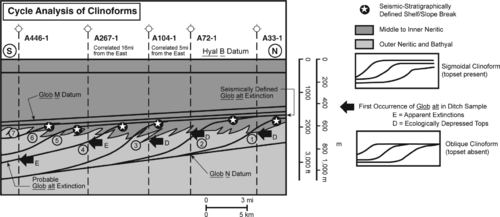
Using seismic reflection geometries to suggest relative sea level phase requires confidence in the coeval character of seismic reflections. The first downhole occurrence of Glob alt (Globoquadrina altispira, bold arrows) in Figure 8 suggests a correlation cross-cutting the seismically imaged clinoforms. If the Glob alt occurrences are coeval, the seismic reflections are time transgressive.
Note that the first downhole well-cutting sample occurrence of the bioevent Glob alt is at the interface of outer neritic and upper bathyal biofacies, except in the two southern wells, A446-1 and A267-1, where the first occurrences occur within stratigraphic intervals containing bathyal biofacies. Glob alt is a planktonic foraminifer normally found associated with open marine faunas and floras interpreted as upper bathyal assemblages. The occurrences of Glob alt coincident with the first upper bathyal biofacies assemblage suggests a facies-controlled top, depressed below the true extinction top by environmental factors. The two occurrences within upper bathyal biofacies are interpreted as true extinction events. These true extinction events correlate with a seismic reflection, suggesting that specific reflection approximates a time line and can be used to extend the Glob alt extinction event datum (2.8 Ma) northward toward the basin margin (see Armentrout & Clement[16]).
This type of bioevent analysis is essential when identifying chronostratigraphically useful bioevents and demonstrating that seismic reflections approximate time lines.[17]
See also
- Sea level cycle phase
- Determining sea level cycle order
- Sea level cycle phase and systems tracts
- Systems tracts and trap types
- Identifying sea level cycle phase with biostratigraphy
- Biofacies and changing sea level
- Constructing age model charts
- Superimposed sea level cycles
- Sequence stratigraphy
References
- ↑ 1.0 1.1 Vail, P. R., 1987, Seismic stratigraphy interpretation procedure, in Bally, A. W., ed., Atlas of Seismic Stratigraphy: AAPG Studies in Geology No. 27, p. 1–10.
- ↑ Snedden, John W., and J. F. (Rick) Sarg, Seismic Stratigraphy-A Primer on Methodology, Search and Discovey Article #40270 (2008).
- ↑ 3.0 3.1 3.2 3.3 3.4 Armentrout, J. M., 1993, Relative seal-level variations and fault-salt response: offshore Texas examples: Proceedings, Gulf Coast Section SEPM 14th Annual Research Conference, p. 1–7.
- ↑ 4.0 4.1 4.2 Armentrout, J. M., 1996, High-resolution sequence biostratigraphy: examples from the Gulf of Mexico Plio–Pleistocene, in J. Howell and J. Aiken, eds., High Resolution Sequence Stratigraphy: Innovations and Applications: The Geological Society of London Special Publication 104, p. 65–86.
- ↑ 5.0 5.1 Armentrout, J. M., 1991, Paleontological constraints on depositional modeling: examples of integration of biostratigraphy and seismic stratigraphy, Pliocene–Pleistocene, Gulf of Mexico, in Weimer, P., Link, M. H., eds., Seismic Facies and Sedimentary Processes of Submarine Fans and Turbidite Systems: New York, Springer-Verlag, p. 137–170.
- ↑ Armentrout, J. M., Malacek, S. J., Mathur, V. R., Neuder, G. L., Ragan, G. M., 1996, Intraslope basin reservoirs deposited by gravity-driven processes: south Ship Shoal and Ewing Banks areas, offshore Louisiana, in Pacht, J. A., Sheriff, R. E., Perkins, B. F., eds., Stratigraphic Analysis: Utilizing Advanced Geophysical, Wireline, and Borehole Technology for Petroleum Exploration and Production: Proceedings, Gulf Coast Section SEPM 17th Annual Research conference, p. 7–18.
- ↑ 7.0 7.1 Vail, P. R., Wornardt, W. W., 1990, Well log seismic stratigraphy: a new tool for exploration in the '90s: Proceedings, Gulf Coast Section SEPM 11th Annual Research conference, p. 379–388.
- ↑ Loutit, T. S., Hardenbol, J., Vail, P. R., Baum, G. R., 1988, Condensed sections: the key to age determination and correlation of continental margin sequences: SEPM Special Publication 42, p. 183–213.
- ↑ Haq, B., J. Hardenbol, and P. R. Vail, 1988, Mesozoic and Cenozoic chronostratigraphy and cycles of sea-level change: SEPM Special Publication 42, p. 71–108.
- ↑ Jervey, M. T., 1988, Quantitative geologic modeling of siliciclastic rock sequences and their seismic expression: SEPM Special Publication 42, p. 47–69.
- ↑ 11.0 11.1 Mitchum, R. M., Jr., Van Wagoner, J. C., 1990, High-frequency sequences and eustatic cycles in the Gulf of Mexico basin: Proceedings, Gulf Coast Section SEPM 11th Annual Research conference, p. 257–267.
- ↑ Posamentier, H. W., Vail, P. R., 1988, Eustatic controls on clastic deposition II—sequence and systems tract models: SEPM Special Publication 42, p. 125–154.
- ↑ Sarg, J. F., 1988, Carbonate sequence stratigraphy: SEPM Special Publication 42, p. 155–181.
- ↑ 14.0 14.1 Armentrout, J. M., 1987, Integration of biostratigraphy and seismic stratigraphy: Pliocene–Pleistocene, Gulf of Mexico: Proceedings, Gulf Coast Section SEPM 8th Annual Research Conference, p. 6–14.
- ↑ 15.0 15.1 Mitchum, R., M., Jr., 1977, Seismic stratigraphy and global changes in sea level, 11: Glossary of terms used in seismic stratigraphy, in Seismic Stratigraphy—Applications in Hydrocarbon Exploration: AAPG Memoir 26, p. 205–212.
- ↑ Armentrout, J., M., Clement, J., F., 1990, Biostratigraphic calibration of depositional cycles: a case study in High Island–Galveston–East Breaks areas, offshore Texas: Proceedings, Gulf Coast Section SEPM 11th Annual Research Conference, p. 21–51.
- ↑ Mitchum, R. M., Jr., Vail, P. R., Sangree, J. B., 1977, Stratigraphic interpretation of seismic reflection patterns in depositional sequences, in Payton, C. E., ed., Seismic Stratigraphy—Applications to Hydrocarbon Exploration: AAPG Memoir 26, p. 117–143.
